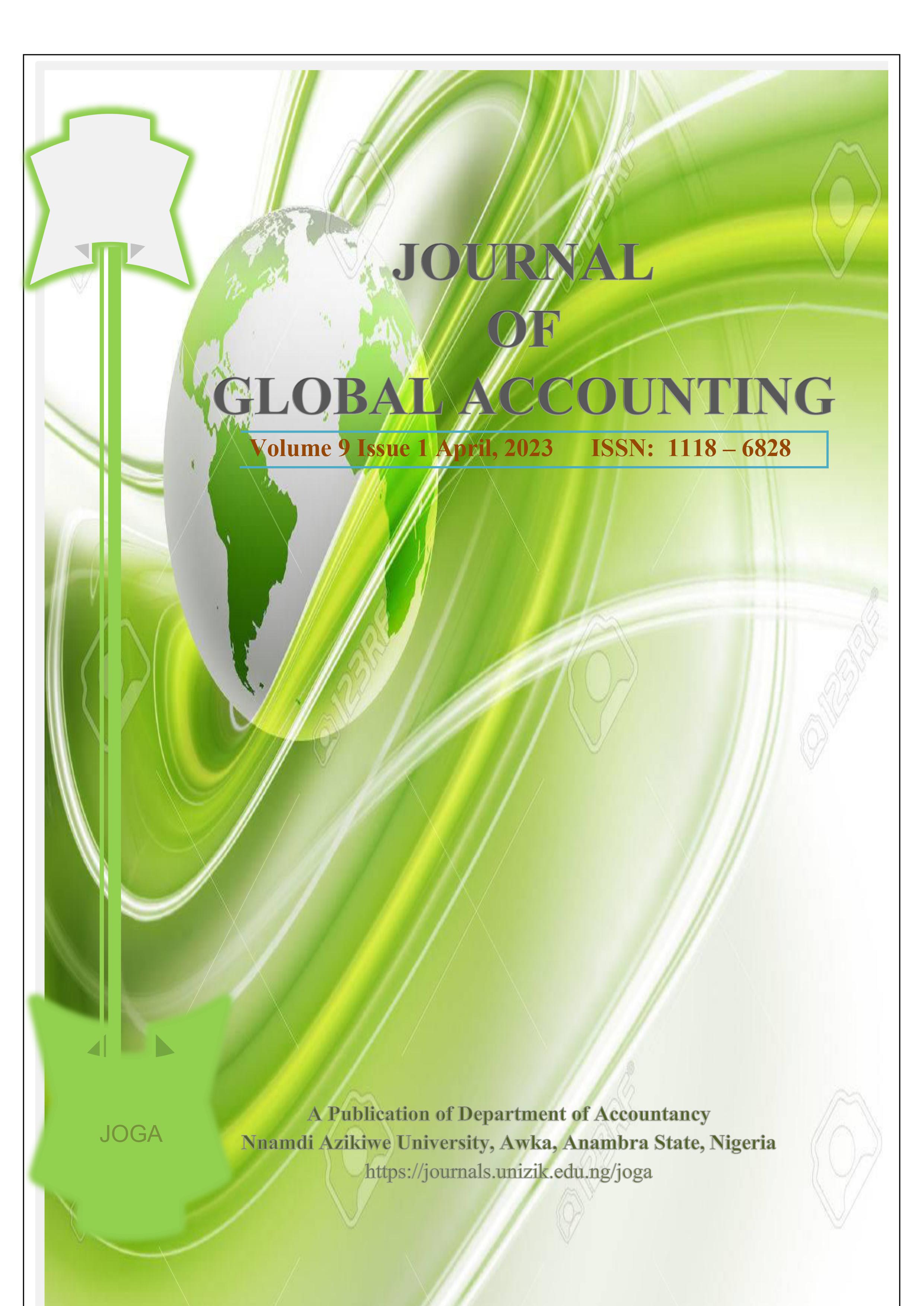INDIRECT TAX ADMINISTRATION AND GOVERNMENT REVENUE GENERATION IN NIGERIA
Keywords:
Indirect tax, Tax administration, Government revenueAbstract
This study examined indirect tax administration and government revenue generation in Nigeria. Specifically, the study sought to ascertain how Value Added Tax, and Customs and excise duty as proxies for indirect tax administration affects government revenue generation in Nigeria. Time series data for 22 years spanning from 2000 to 2021 were sourced from secondary sources including FIRS annual reports, CBN bulletin and National bureau of statistics (NBS) reports. The study adopted ex-post facto research design, and the formulated hypotheses were tested using ordinary least square regression (OLS) at 5% significant level and by way of preliminary test, augmented dickey fuller (unit root) test was used to ascertain the stationary state of the time series variables. The results of the analysis revealed that all the variables have a joint significant influence on the total government revenue generation in Nigeria at 5% significant level. While specifically, Value Added Tax have a positive significant effect on total revenue generation while Customs and Excise Duties showed both negative and non-significant effect on total revenue generation in Nigeria. The study recommends amongst others that government through FIRS should double efforts to sustain appreciable level of revenue via value tax by capturing all informal economic activities that may hinder collection of VAT and secondly, government should re-orientate the Nigerian Custom Service via rigorous training to improve their skills and knowledge and also ensure strict implementation of the Nigerian Custom Service reforms to curb loopholes through which revenue flow out.
Downloads
Published
Issue
Section
License
Copyright (c) 2023 JOGAArticles submitted to JOGA should not have been published or are currently under review by another Journal. Kindly see the guide for the preparation of the manuscript for details. Successful submission of articles by author(s) for publication clearly implies that the work is not an infringement of any existing copyright warranty as JOGA reserves the right to be indemnified by the author(s) where any breach of such warranty is proven. For ease of dissemination and to ensure proper policing of use, papers and contributions become the legal copyright of JOGA once published unless otherwise agreed.
Permission clearance should be obtained by the author(s) where applicable for the use of any content of interest not originally created by them. This must be done before the submission of the article to JOGA. Failure to do so may lead to a lengthy delay in publication, as JOGA is unable to publish any article which has permissions pending. Thus, the rights JOGA requires are:
- Non-exclusive right to reproduce the material in the article or book chapters.
- Print and electronic rights.
- To use the material for the life of the work (for instance, there should be no time restrictions on the re-use of material).
Where tables, figures or excerpts of more than 250 words are reproduced from another source, it is expected that:
- Author(s) should obtain the necessary written permission in advance from any third-party owner of the copyright for the use in print and electronic formats of any of their text, illustrations, graphics, or other material in their manuscript. Permission must also be cleared for any minor adaptations of any work not originally created by the author(s). The author (s) should not assume that any content freely available on the web is free to use.
- Where the author adapts a significant number of any material, the author(s) must inform the copyright holder of the original work.
- Author obtains any proof of consent statements
- The author must acknowledge figure(s) and content adopted or adapted in work utilizing source(s) and further capture them in the list of references.

